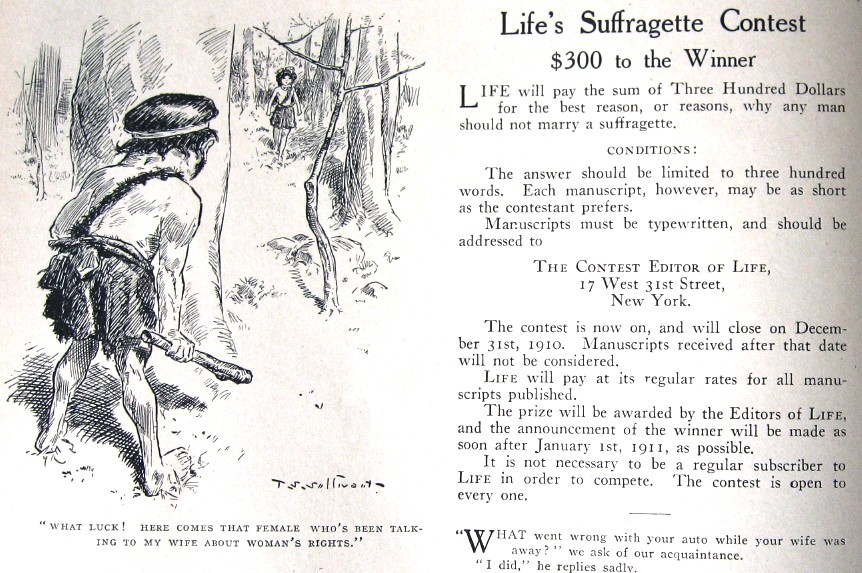Breaking: The Parts are Sometimes Worth More than the Whole
- by Susan Halas

Politically incorrect material is collectible today.
For example, in the first decade of the 20th century it was thought uproariously funny to ridicule “Votes for Women.” LIFE, a vintage humor magazine of the period, even held a contest in 1909 asking the writer to state reasons: “Why I Would Not Marry a Suffragette” and offering a substantial cash prize to the winner. Time moved on, funny or not, now women vote, and those old ads have a market value today.
Likewise images depicting other outdated stereotypes are also collectible be they Asian, Latino, American Indian or Black. Anyone interested in popular portrayal of women and minorities in America will find it amply if unconsciously documented in the pages of vintage magazines. As late as the 1960s you’ll find ads for well known manufacturers describing the “girls” in the typing pool and all the miraculous increases in speed and productivity that can achieved by equipping those “girls” with the latest and greatest office machines. Then it was ad copy, today it’s a collectible documentation of long running gender bias.
Taking a book or magazine apart is only the first part of getting it ready to sell. The real art is in writing the description. It has to be short enough that someone will read it all the way through, and long enough that it covers the main point of interest.
It should put the emphasis on what’s desirable, unusual or unique about the item, but it also acknowledges the presence of library stamps or perfs, marks of a prior owner, other stray marks in a young hand, old labels, ragged edges, what’s on the back (usually unrelated) and specifically state if it’s complete or lacks pages, plates or maps. Even if you only save one article it’s a good idea to also save the cover and the table of contents.
If you’re familiar with the author or subject mention that it predates X or is earlier than Y, or perhaps it was really the true first Z. Don’t fail to mention it is in exceptionally nice condition, or conversely if in wretched shape but the only one you’re ever likely to see. Put in enough information that the buyer can be sure of what’s offered, but not so much information that he can locate a cheaper copy.
The list of what not to break is endless, at the top of mine is don’t break digest size vintage science fiction magazines containing important installments by well know authors. Keep the issues whole and try to get all the installments. Some of the best known and most desirable science fiction appeared first in these magazines and as the 20th century rapidly recedes it is harder and harder to find all the parts in nice condition and when you do the value increases proportionately.
It’s difficult to fit all there is to know about breaking into a short piece. Suffice to say you can sometimes turn a sow’s ear into a silk purse, and if you’ve got the time and patience to find the good material, it can be financially worthwhile.
------
Reach Susan Halas at: wailukusue@gmail.com